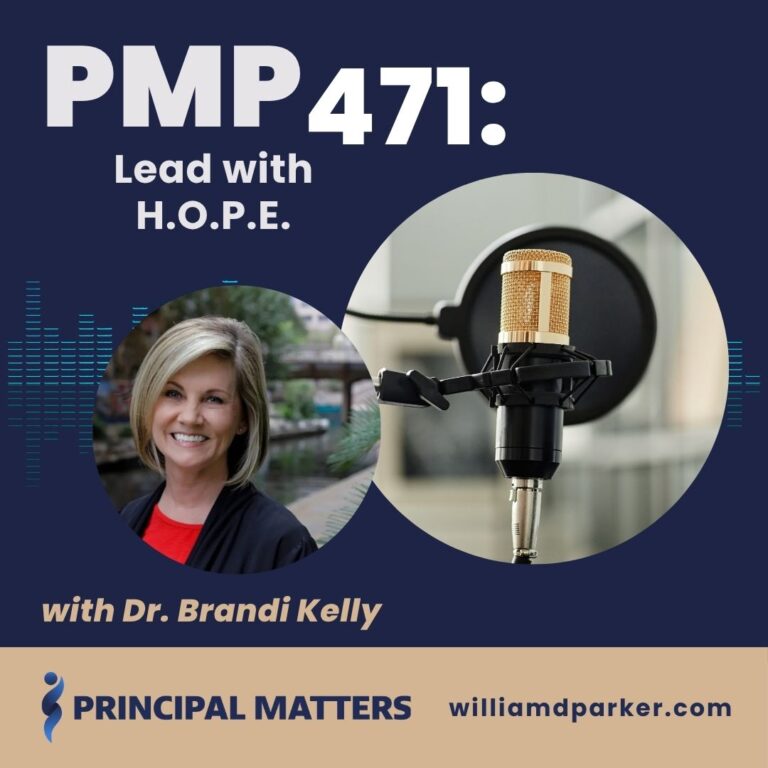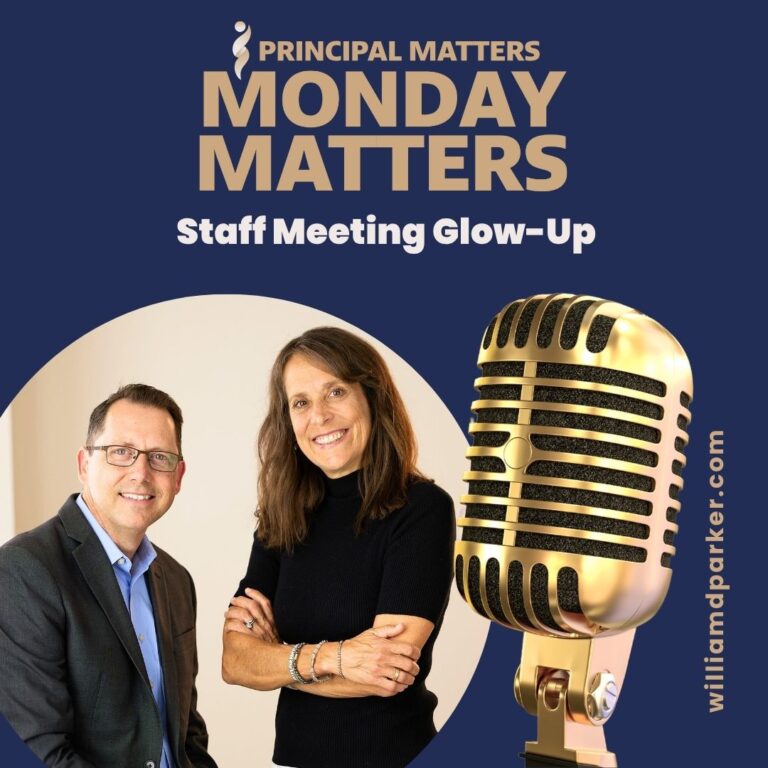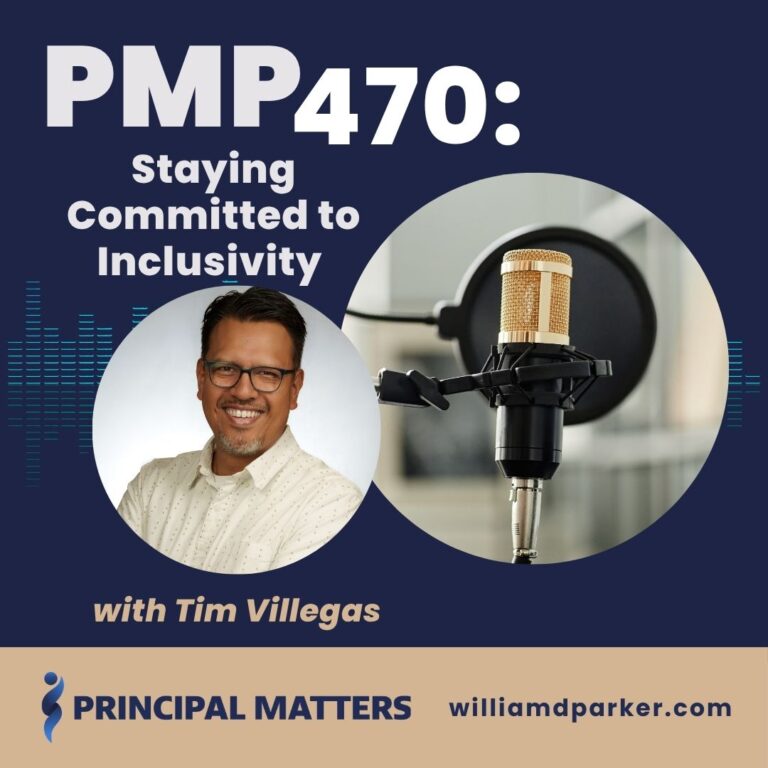Podcast: Play in new window | Download
Last week I was walking back to my car from a visit to Oklahoma’s state capitol, when I saw a line of reporters, police, and education supporters stopped in front of me.

I just happened to be on the street where Tulsa Public School Superintendent Deborah Gist and others from her community were arriving from a week-long march from Tulsa to Oklahoma City. Teachers, parents, and children lined the streets with signs that read, “Support Education” or funnier ones like “My textbooks are as old as my grandma.” Police on motor cycles led the procession, followed by a high school band, and hundreds of others who had joined the marchers in their last few miles to the capitol steps.
As Deb Gist addressed the crowd of thousands, she said, “This is not a protest. This is a movement.” And she praised supporters for the work they had done, called them to continue advocating for schools, and reminded them to vote in upcoming elections.
Oklahoma education has been in the news a lot lately. This past week The New York Times reported “Oklahoma Teachers End Walkout After Winning Raises and Additional Funding.” Dana Goldstein and Elizabeth Dias explained that many teachers across the state would be returning to school after a two-week work stoppage that affected approximately 500,000 students from schools that participated in the rallies.
Across the States
Oklahoma is not the only state in the news for education rallies. Across the U.S. state legislatures have faced increasing pressure as teachers respond to years of unsustainable cuts to school funding. Just weeks ago, West Virginia teachers rallied for new state laws that have resulted in teacher pay raises.
Kansas has been settling a constitutional crisis that required their state supreme court to step in last fall and force the legislature to fund its schools. Just last week, lawmakers there were told their budget is still $80 million short of the funding required, and lawmakers are scrambling to re-do the math and find a solution.
Missouri schools face pressures from a court embattled Governor who just months ago removed state board of education members, fired the state education commissioner and cut school funding by $68 million. Now the Governor is facing calls for his resignation from his state’s attorney general and the majority leader in the state senate from his own party for revelations of sexual misconduct.
Kentucky teachers have been rallying at their state capitol as their state legislature voted to override their Governor’s veto on a bill to increase funding for Kentucky’s public schools by $480 million.
And teachers in other states like Arizona are conducting “walk-in” rallies and threatening walkouts if their state does not increase school funding soon.
Thoughtful Analysis
Across the U.S. many public-school systems have been facing especially difficult times as state legislatures have cut taxes for years. This week, Mark Wingfield, in the Baptist News Global, wrote an opinion piece called “When it comes to funding public education, don’t eat your seed corn.”
In the article, he says:
“Too many states in our union, and even our nation itself, have cut funding for public education to the point of eating their seed corn. And they have done so around the rallying cry of low, low, bargain-basement taxes. It seems there is no bottom to the desire to avoid paying taxes…This is neither wise nor fiscally conservative. It is, instead, selfish. There is a difference between fiscal conservativism and selfishness, by the way.”
Wearing the Hat of Advocacy
So, what are school leaders to do in the face of public policies that so dramatically impact our schools? The reality is that as school leaders, you are not only instructional leaders but you bear the weight resulting from good or bad public policy.
You are often the ones asked to reorganize school budgets or master schedules with fewer dollars or fewer teachers on staff. When state or federal laws are passed that affect school policies, you are the one asked to be on the front-line for implementing change.
As I have shared with school leaders across the nation on the many hats you must wear in leading schools, you must also wear of the hat of the education advocate.
How can you wear the hat of the education advocate? Here are six tips:
1. Stay informed.
Whether it is through an association membership or subscribing for alerts through your state’s legislative websites, find ways to stay informed with the facts. For instance, in Oklahoma, you can subscribe for updates from the House of Representatives at their website https://www.okhouse.gov. This feedback is essential to having current and up-to-date information for staying informed on what potential decisions may affect your schools.
If you are a member with your state principal association, or a national association like NASSP, you will find the advocacy updates from those teams recent and useful. As much as I love the up-to-date information I find on social media, let me caution that social media posts are not always the best source for facts. A quick rule of thumb is to remember what you learned in high school: Find primary documents or check your sources before making informed decisions.
2. Be involved in advocacy.
Contacting legislators may not be much fun, but it is important to be a voice of reason for to your representatives. Invite them to your school. Connect with them by phone calls or emails to voice concern or ask for support of upcoming bills. And of course, nothing replaces face-to-face conversations.
Over the years, I have also included students in advocacy. Students provide the most powerful example of how laws directly affect their lives. Last year, I had a senior student share her story with one of our state senators about how her high school teacher and student council sponsor had inspired her to pursue her dream to become a communications major. She wanted to know why lawmakers were unable to support more funding to keep teachers like hers in our state. These real-life stories are important ways to engage in advocacy.
Just recently, many districts in my state have designated teacher teams or parent advocacy committees to visit lawmakers on behalf of their local schools.
3. Know your representatives.
Voting records and conversations are helpful ways to determine which elected officials sincerely support local schools. Because my state has a law that requires 75% majority agreement on any tax increases, Oklahoma has often been paralyzed in its ability to increase funding for schools. With such a small margin of error, a handful of representatives can easily train-wreck proposals for school funding.
During this past budget crisis in my state, it was apparent that certain members would have to change their votes. By studying representatives, education supporters were able to identify which members should be targeted by outreach, emails, and visits.
Also, remember that representatives are people too. When you reach out to them, do so with dignity and respect you want other showing you when they’re asking for your support.
4. Support and vote for pro-education candidates.
Of course, long-term support for schools cannot happen if you are not an active voter. Register to vote, help others to register, make donations, attend town hall meetings, or volunteer for a candidate. We simply don’t have room to complain if we are not actively involved in the democratic process of electing representatives who truly represent the best interests of their communities.
5. Showcase your school successes.
I am a big fan of positive messaging, which is why I wrote the book, Messaging Matters: How School Leaders Can Inspire Teachers, Motivate Students, and Reach Communities. Advocacy and messaging go hand-in-hand. We cannot ask lawmakers to support our schools if schools are not places that inspire their support. As the chief communicator for your school, ask yourself these questions:
• How are you highlighting, showcasing, and celebrating student and teacher success?
• How are you encouraging parents to be involved in the great learning happening?
• How are you sharing stories of success and achievement beyond your own community?
Whether it is a weekly newsletter, social media posts, school gatherings, or press releases, keep your community informed of the powerful learning and growing happening at your school. Share these stories beyond your school community as well.
Public perception drives public policy. So be an agent of influence by messaging positive and celebratory moments throughout every day with your school community.
One of my favorite examples of this comes from Aspasia Carlson, Principal of John Marshall Mid-High School, in Oklahoma City. She consistently shares images, videos or highlights of successes happening with her students and teachers. Through her positive messaging with parents, community members, and local officials, she has rallied strong support and turned an at-risk school into a successful, thriving school.
6. Build and maintain positive relationships.
One of the biggest lessons I’ve seen from recent events in Oklahoma is the importance of maintaining strong relationships. You must keep trust with your students, teachers, and community members. During the recent work stoppage, local boards of education across the state approved proposals to cancel school so that teachers could rally. I saw principals and superintendents standing with teachers and community members, bringing them doughnuts for their bus rides, or walking with them in long miles to the capitol.
When it was time to return to school, these relationships were the glue that pulled many communities back together in shifting their focus to finishing school and rallying support for upcoming elections. Remember at the end of the day, your relationships are the most important part of maintaining learning communities.
Let’s Wrap This Up
These past few weeks in Oklahoma have been both rewarding and challenging. On the one hand, Oklahomans have seen bills passed that provide historic tax increases for school funding. On the other hand, many educators also experienced the discouraging realities of gridlock and name-calling involved in politics.
Last night I saw a post on Facebook from a parent in our community that summarized why advocacy is worth it. Stephanie Ruttman, is a stay-at-home mother. She was responding to posts she had seen from teachers who felt disappointed that their advocacy had fallen short of the increased funding levels they wanted restored to schools.
She wrote these words that I’m sharing with her permission:
“I keep hearing teachers and parents say they feel defeated and that the walkout was all for nothing. Do not feed that lie. Starve it! As it goes with teaching, the impact this walkout has had on me and my kids and thousands of others across the state cannot be measured in dollars and cents.
Because of YOU, I know who my legislators are. Did not know that before.
Because of YOU, I overcame my intimidation of contacting those legislators.
Because of YOU, I am so much more informed about the legislative process.
Because of YOU, I will be an informed voter on my state representatives for the first time since I registered. Previously, I left that space unmarked.
Because of YOU, I know the questions to ask and I’m not intimidated to ask them of those running for office.
Because of YOU, I have a standard in mind of what a rally or a protest or a movement should look like. Energized, peaceful, kind, clean, clever, and LOUD.
Because of YOU, I have a new sense of determination to fight on your behalf for the funding you deserve to do your job to the best of your ability.
Because of YOU, change has occurred and change is a comin’.”
She concludes with, “I know these sentiments don’t put food on the table or money into the state formula for you. But these sentiments DO propel me and countless others to fight harder for you. The walkout may be over. But the movement is just beginning.”
So how do you wear the hat of the education advocate? You stay informed, stay involved, know your representatives, vote, celebrate successes, and keep strong relationships. At the end of the day, you know you are adding your voice with thousands of others to positively influence the lives of students.
Now It’s Your Turn
What is one step you can take today to reach out to a legislator on behalf of your school? What successes or great moments of learning can you share out from your community? How can you keep building strong relationships with others so you are maintaining a positive influence in crucial conversations?
Sources Cited:
“Embattled Missouri Governor’s Budget Cuts $68M from Schools.” WPSD Local 6 – Your News, Weather, & Sports Authority, 22 Jan. 2018, www.wpsdlocal6.com/2018/01/22/embattled-missouri-governors-budget-cuts-68m-schools/.
Goldstein, Dana, and Elizabeth Dias. “Oklahoma Teachers End Walkout After Winning Raises and Additional Funding.” The New York Times, The New York Times, 13 Apr. 2018, www.nytimes.com/2018/04/12/us/oklahoma-teachers-strike.html.
Hanna, John. “Kansas Lawmakers Work Weekend in Effort to Solve School Funding Crisis.” USA Today, Gannett Satellite Information Network, 7 Apr. 2018, www.usatoday.com/story/news/nation/2018/04/07/kansas-school-funding-crisis/495733002/.
Kuhn, Casey. “Arizona Teachers ‘Walk-In’ To Protest Low Pay And Low Funding.” NPR, NPR, 11 Apr. 2018, www.npr.org/2018/04/11/601419914/arizona-teachers-to-protest-low-pay-and-school-funding-shortfalls.
Petulla, Sam. “West Va. Teachers Got Their Raise. Where Do Your State’s Teachers Rank?” CNN, Cable News Network, 7 Mar. 2018, www.cnn.com/2018/03/06/politics/why-west-virginia-teachers-striking-healthcare-pay-raises/index.html.
Press, The Associated. “Kentucky Lawmakers Override Budget Veto in Win for Teachers.” The New York Times, The New York Times, 14 Apr. 2018, www.nytimes.com/2018/04/13/us/kentucky-budget-veto-teachers.html.
“When It Comes to Funding Public Education, Don’t Eat Your Seed Corn – Baptist News Global.” Baptist News Global, 9 Apr. 2018, baptistnews.com/article/when-it-comes-to-funding-public-education-dont-eat-your-seed-corn/#.WtHgAS_Mzwd.
Sign-Up For Free Updates and Ebook
When you enter your email address below, you will automatically receive my newest posts and a free Ebook, 8 Hats: Essential Roles for School Leaders. Let’s keep learning together!
Subscribe for free weekly updates and receive free e-book!
(function($) {window.fnames = new Array(); window.ftypes = new Array();fnames[0]=’EMAIL’;ftypes[0]=’email’;fnames[1]=’FNAME’;ftypes[1]=’text’;fnames[2]=’LNAME’;ftypes[2]=’text’;}(jQuery));var $mcj = jQuery.noConflict(true);
Principal Matters–The Book!

School leaders are very busy, so each of the twenty-four chapters is designed as a quick-read and followed with take-action questions for follow-up or reflection. If you want practical ideas on understanding your purpose, managing school teams, dealing with challenges, and leading with courage, action, motivation, and teamwork, go HERE to pick up a copy for you or your team.
Messaging Matters

Harness the power of messaging to create a culture of acknowledgment, respect, and celebration. Written specially for leaders, this title is divided into three parts, helping readers to maximize their role as chief communicators with students, teachers, and parents and community. Each chapter includes suggestions for using digital tools to enhance messaging and ends with reflection questions and practical next steps.




